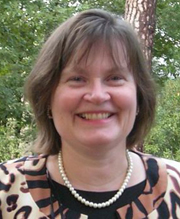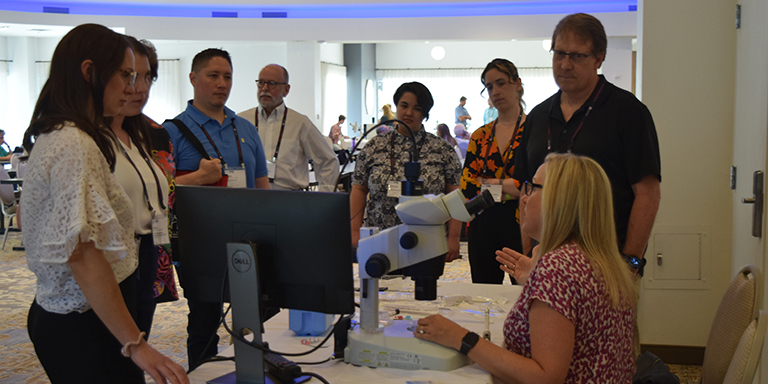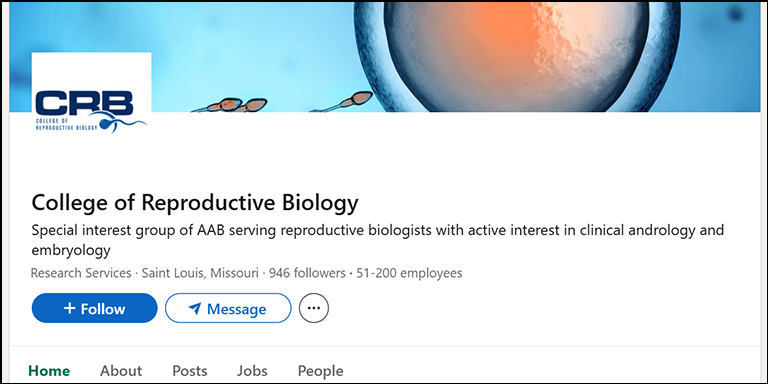Report: 69th ASRM Annual Meeting Held Conjoint with IFFS
Boston Convention & Exhibition Center, Boston, Massachusetts, USA
 |
| Carole Wegner, Ph.D., HCLD(ABB) |
This year’s conjoint ASRM-IFFS meeting was held in Boston, a place filled with so many beautiful sights, both historic and modern, an attendee might be forgiven for a few diversions outside the BCEC to take in all that Boston has to offer. On the scientific front, the offerings were robust and numerous, again making it difficult to choose which sessions to attend. Big ideas in cell biology might well have been the theme this year for the plenary talks.
Dr. Elizabeth H. Blackburn, Ph.D., recipient of the 2009 Nobel Prize in Physiology or Medicine, was the opening speaker. She discussed her research in the area of telomere shortening in her ASRM President’s Guest Lecture, “Chromosome ends: Why We Care About Them.” Telomeres are a region of repetitive DNA sequence at the end of chromosomes that protect the ends of chromosomes from losing DNA sequences with each cycle of DNA replication. Maintaining the length of these protective end caps is essential to preserving DNA sequence authenticity in subsequent cell divisions.
Abnormal telomere lengths have been linked to human diseases and cancer. Diseases associated with human aging and earlier mortality such as impaired immune function, osteoarthritis, cancer, lung disease, heart disease, diabetes, vascular disease, and dementia have all been associated with abnormally shortened telomeres. Abnormal telomere shortening can be induced by environmental factors such as chronic stress, but the inability to maintain telomere length may also have a genetic component since it has been found in subsequent generations in family studies. Apparently, there is a “just right” telomere length for good health because excessively long telomeres have also been implicated in some cancers.
Another big idea in cell biology is the role of small RNAs in stem cell self-renewal. As gametes arise from stem cells, this talk has obvious implications in understanding reproductive problems, such as azoospermia, which may arise from a failure of spermatogenesis. Dr. Haifin Lin, Director of the Yale Stem Cell Center gave the Camran Nezhat, M.D. Lecture, “Small RNAs, Stem Cells and Self Renewal. His lab discovered a new small RNA type called Piwi-interacting RNAs (piRNAs) that bind to Piwi genes and were found to be essential for self-renewal in the testis. His work has been written up in Science Magazine as one of “Top 10 Great Breakthroughs” of 2006. The Piwi genes belong to a larger gene family called the Argonaute that were known to have a role in controlling gene expression via other small RNAs such as microRNAs (miRNAs) and small interfering RNAs (siRNAs). The human version of the Piwi gene is called Hiwi.
Remember the non-coding sequences of DNA that was referred to as “junk DNA” because we had no idea what it did, since it didn’t code for mRNA? Well, it turns out that Piwi binding regions are located throughout this “junk DNA” and are now believed to be critically important for epigenetic gene regulation. In Drosophila, for example, you can find these binding spots in over 50% of the genome. As it turns out, Piwi RNA binds to these sites and recruits epigenetic factors that affect how the DNA is folded or methylated, altering whether the gene region is active or inactive. Most epigenetic factors don’t have direct DNA binding sites and Piwi may be the RNA mediator between the epigenetic factor and the DNA for these interactions in some genes. Overexpression of the human Piwi-piRNA analogue called Hiwi has been highly correlated with the occurrence of seminomas, a cell line testicular tumor most common in younger males. When Hiwi-activity is inhibited in an in vitro cell model, cancer cell proliferation is inhibited, again suggesting a role for this small RNA class in modulating gene activity and cell proliferation.
| CRB 2013 Reception - View Pictures |
The theme of epigenetics was further explored in the Herbert H. Thomas Lecture, “The Effect of ART and IVF on Epigenetic Programming in the Embryo”, given by Renee A. Reijo Pera, Ph.D., Director of the Human Embryonic Stem Cell Research and Education and a Professor of Obstetrics and Gynecology at Stanford University. It turns out that the two major stages of a human’s life in which epigenetic programming is fundamentally important are reproductive-related: during gametogenesis and during pre-implantation development. During the five days of pre-implantation development that we in the ART community are so intimately familiar with, the epigenetic programming that the egg and sperm have prior to fertilization must be erased and restored with embryo specific programming. This uploading of the epigenetic embryo program occurs around Day 3, consistent, as you might expect, with embryonic genome activation. There have been previous reports that factors inherent to the in vitro culture environment (media, temperature etc.) may in fact alter this genetic imprinting or epigenetic programming, causing poorly understood and possibly deleterious effects on the embryo and the IVF child. Dr. Reijo Pera’s talk focused on histone modifications, and the observation that some histone modifications such as methylation are expressed differently in fertile vs. non-fertile patients, adding to the complexity of possible causes for epigenetic programming differences. Some histone modifications have been linked to failed embryo development due to a failure of genome activation. Embryo loss and miscarriage are likely to be the major effect of epigenetic programming mistakes.
From these three plenary talks, it is clear that as our fundamental understanding of cell biology improves, it will no doubt impact our daily ART protocols in the lab. In terms of current practical applications, the role of aneuploidy testing and time-lapse imaging were hotly debated in terms of how they might be best used for selecting the “most likely to implant” embryo. Since there is no consensus as of yet, you can expect to see more on this topic next year as clinic experience increases with both these approaches. This year’s ASRM-IFFS joint meeting was exceptional in scientific content. We look forward to an even more compelling scientific program next year to effectively compete with the even more exceptional diversions that the islands of Hawaii will surely offer.
Submitted by Carole Wegner, Ph.D., HCLD(ABB) (Zygote Science, LLC)
CRB News Articles
02/19/2014
From the President
02/19/2014
Meeting Committee
02/19/2014
Legislative Committee
02/19/2014
Membership and Credentialing Committee
02/19/2014
Report: 69th ASRM Annual Meeting
02/03/2014
Rule Released for Patient Access to Laboratory Test Reports
Call for Abstracts - Deadline March 10
A&E Review Course - March 21-23
Trophectoderm Workshop - May 13 & 14
2014 CRB Symposium - May 15-17
CRB Standing Rules - Log in to view



